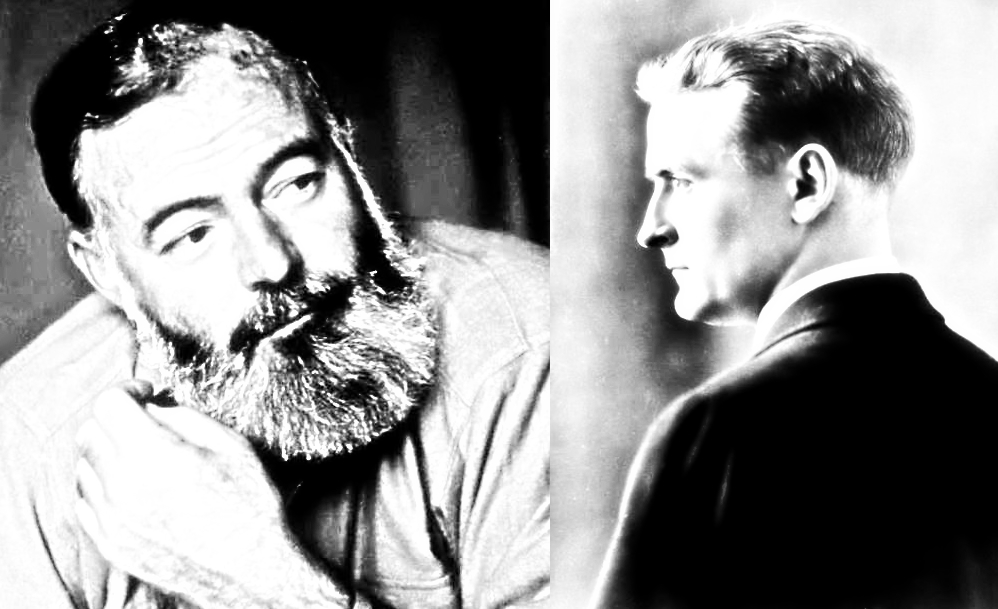What is atmosphere in writing, and why does it matter?
Atmosphere is an essential part of reading and writing, because it is a catalyst for all of the feelings that a reader will experience throughout a book or story. There are not many books that are devoid of atmosphere, and if there are they are probably experimental in nature. However, atmosphere is hard to avoid as it can be a subconscious effort from a writer who is scribing specific experiences from their life or the fictitious lives of their characters.
Today on the blog we are going to discuss the idea of establishing “atmosphere” in stories. Considering that we are reading a novel by Ray Bradbury (The Halloween Tree), I thought it would be a great moment to discuss atmosphere as it appears between the pages of a book.
Definition
If we follow Bloom’s Taxonomy for learning, we should first define atmosphere in texts. Merriam-Webster defines “atmosphere” as “a surrounding influence or environment,” or, more literary, “the overall aesthetic effect of a work of art.” Additionally, it is stated that “atmosphere” is “an intriguing or singular tone, effect, or appeal.”
Another way to view “atmosphere” is through the mood an author establishes in a story. Mood, in this instance, refers to how the reader feels when they are reading a story. For example, when reading a horror story, you might feel scared, anxious, or apprehensive about what is to come next. The mood, however, differs from atmosphere, as mood is an overall feel of the writing in the moment, as opposed to atmosphere, which is the aesthetic, or the feel of the writing from cover to cover.
Mostly, these two words are interested in describing two bits of minutia in writing. That is to say, mood can be described using micro-feeling words (angry and worried), while atmosphere describes macro-feeling words (creepy or strange).
Identifying atmosphere in fiction
In looking for examples of atmosphere, it can either be difficult or extremely apparent. For instance, in The Halloween Tree we have a “nostalgic” atmosphere that appeals to Bradbury’s youth and memories of Halloween night. We also have an overtly “sensory-driven” atmosphere, as Bradbury’s poetic style uses the reader’s senses to overdrive the narrative in imagery.
Here’s an excerpt:
Eight boys made a series of beautiful leaps over flowerpots, rails, dead ferns, bushes, landing on their own dry-starched front lawns. Galloping, rushing, they seized a final sheet, adjusted a last mask, tugged at strange mushroom caps or wigs, shouting at the way the wind took them along, helped their running; glad of the wind, or cursing boy curses as masks fell off or hung sidewise or stuffed up their noses with a muslin smell like a dogs hot breath. Or just letting the sheer exhilaration of being alive and out on this night pull their lungs and shape their throats into a yell and a yell and a … yeeeellll!
The Halloween Tree | Ray Bradbury
First, let’s dial into the “nostalgic” atmosphere, as Bradbury takes us through the motions of boys hooting through the spookiest night of the year.
He states: “Galloping, rushing, they seized a final sheet, adjusted a last mask, tugged at strange mushroom caps or wigs, shouting at the way the wind took them along…” Here we have a group of children putting on their costumes and rushing out the house and down the street.
Who doesn’t have this memory of Midwest Halloween? The feeling is there but at a much larger level than say, “happy” or “joyous,” which is more definitive of mood.
Additionally, the “sensory” portion of our atmospheric analysis can be pulled from the same excerpt. For example, “dead ferns” references our visual senses, because we can see that in our mind’s eye. Additionally, Bradbury finishes the description with “letting the sheer exhilaration of being alive and out on this night pull their lungs and shape their throats into a yell and a yell and a … yeeeellll!” Our auditory senses are pulled toward the enthusiastic scream of the boys. Enthusiasm, in this case, being descriptive of mood, while the sensory feeling of description is the overall atmosphere.
Bradbury’s The Halloween Tree is replete with nostalgia and sensory descriptions, which is actually quite apparent in many of his best novels.
Conclusion
The atmosphere of a text describes the larger picture of a work of narrative. It steers us in a larger direction rather than touching on our lesser feelings, such as horror, happiness, and anger.
The atmosphere of a novel can sometimes be difficult to track, as a reader has to take the whole of the text into consideration rather than just a few examples here and there.
One tip in tracking atmosphere or even implementing it in your own writing, is to treat atmosphere as a post-writing/reading consideration. What did the book feel like across the board? What feelings did you experience the most, and what word comes to mind that describes all of those emotions?
I would love to hear your examples of atmosphere in your favorite books. Which ones stick out to you or might embody atmosphere in writing? Comment and let me know!







